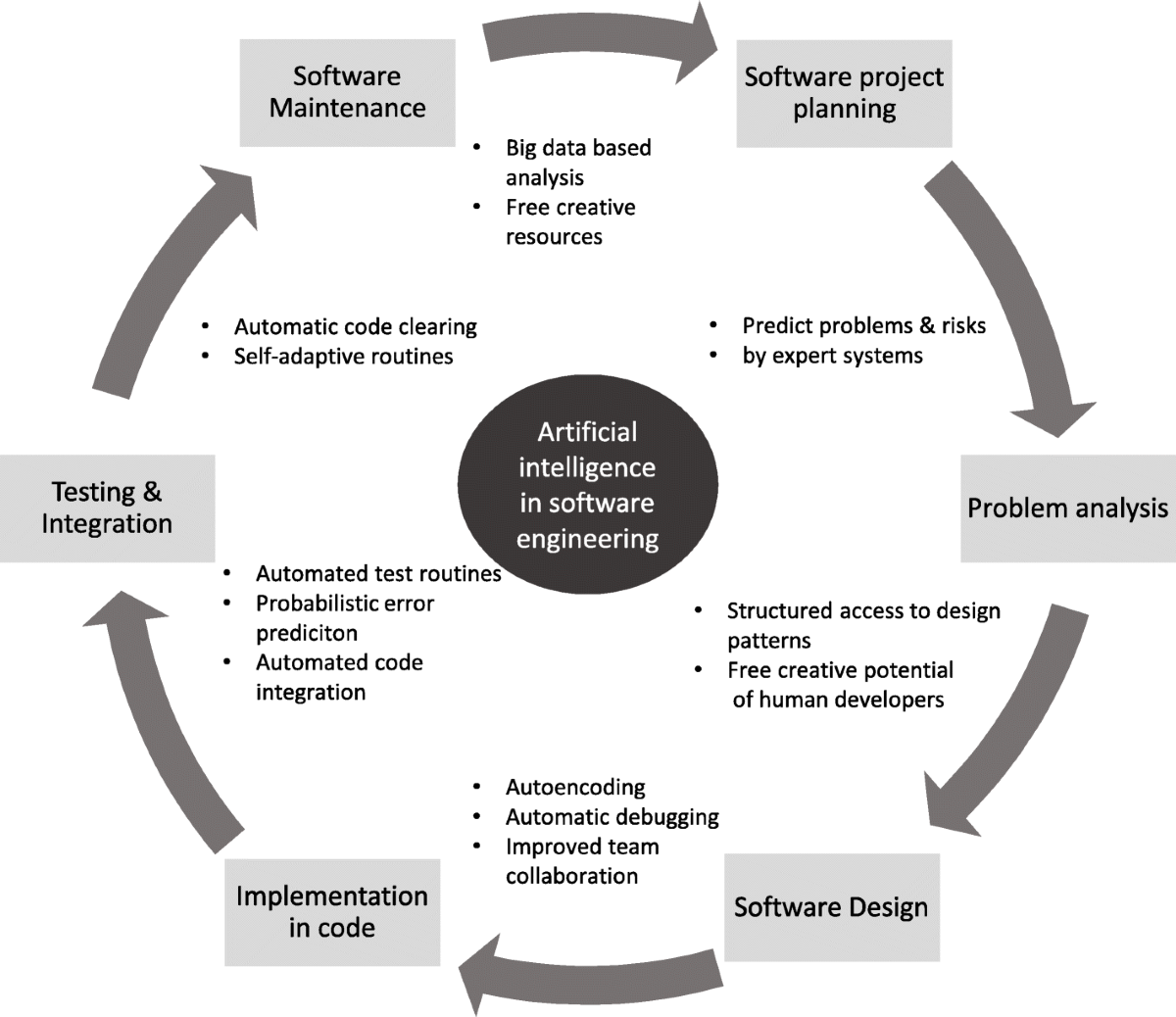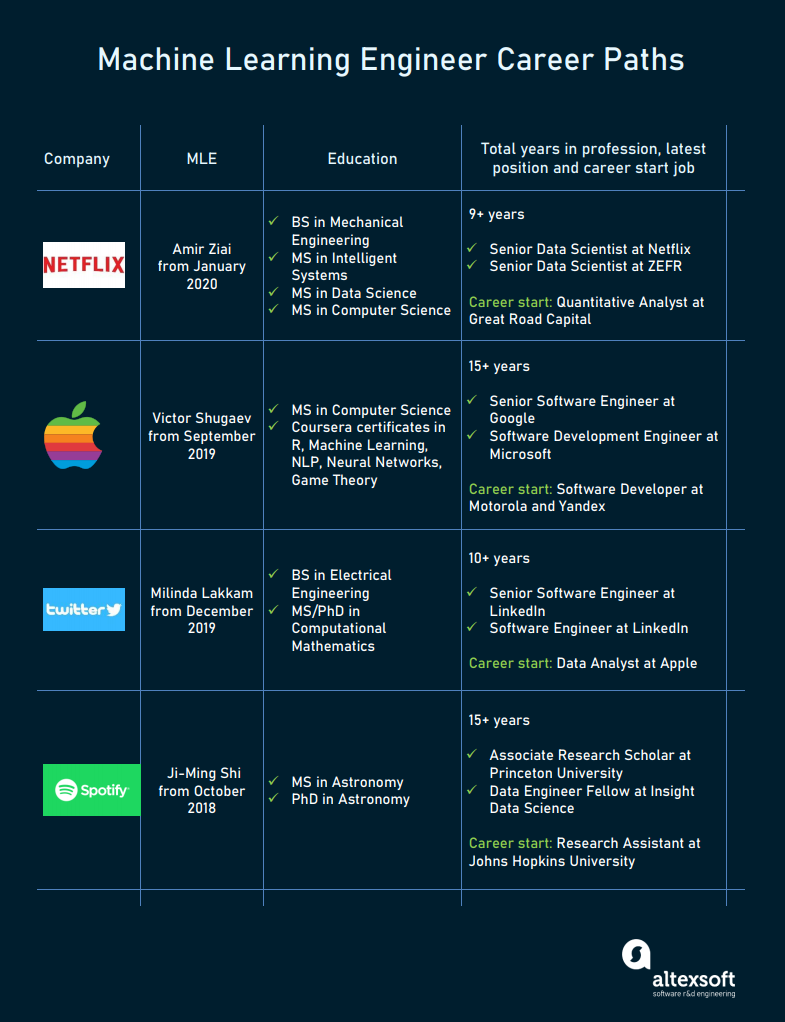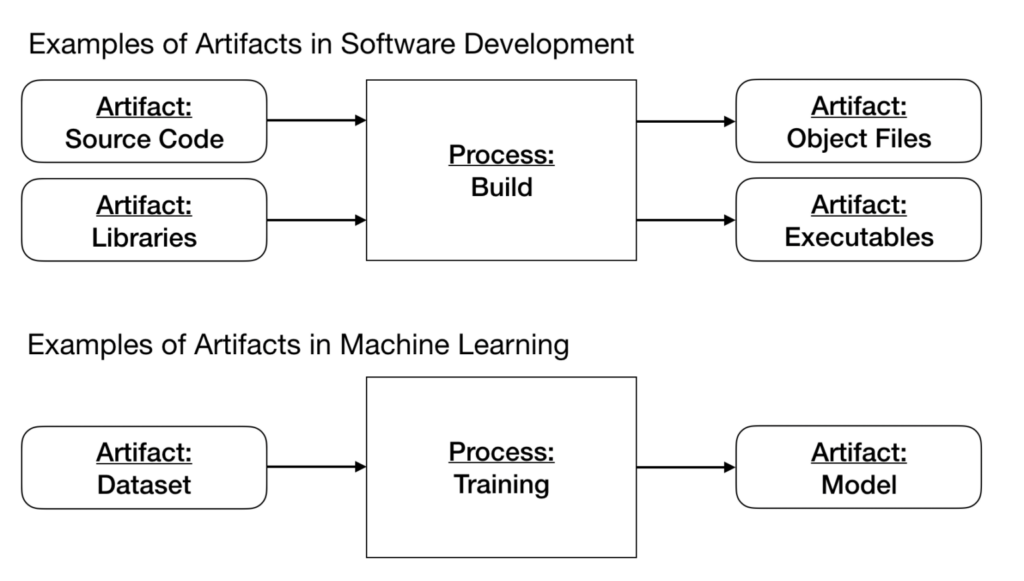All Categories
Featured
Table of Contents
- – All About Why I Took A Machine Learning Course...
- – The Single Strategy To Use For How To Become A...
- – The Best Strategy To Use For Top Machine Lear...
- – Fascination About Machine Learning Engineerin...
- – Some Known Questions About Machine Learning ...
- – The Main Principles Of I Want To Become A Ma...
- – The smart Trick of Machine Learning Crash Co...
Some people believe that that's dishonesty. Well, that's my whole occupation. If someone else did it, I'm going to utilize what that person did. The lesson is putting that aside. I'm requiring myself to believe via the possible services. It's even more about eating the material and attempting to apply those ideas and less concerning locating a library that does the job or searching for somebody else that coded it.
Dig a little bit deeper in the mathematics at the beginning, simply so I can develop that foundation. Santiago: Finally, lesson number 7. I do not believe that you have to understand the nuts and bolts of every formula prior to you use it.
I would certainly have to go and inspect back to really get a better instinct. That doesn't indicate that I can not solve things using neural networks? It goes back to our arranging example I think that's simply bullshit advice.
As an engineer, I have actually serviced many, numerous systems and I have actually used several, many points that I do not understand the nuts and screws of exactly how it works, even though I comprehend the impact that they have. That's the final lesson on that string. Alexey: The amusing point is when I think of all these collections like Scikit-Learn the algorithms they make use of inside to implement, for instance, logistic regression or another thing, are not the same as the algorithms we examine in machine knowing classes.
All About Why I Took A Machine Learning Course As A Software Engineer
So also if we attempted to learn to obtain all these basics of artificial intelligence, at the end, the algorithms that these libraries use are different. Right? (30:22) Santiago: Yeah, definitely. I assume we require a lot much more materialism in the sector. Make a great deal even more of an effect. Or focusing on delivering worth and a little much less of purism.

By the way, there are 2 different paths. I normally speak with those that want to work in the market that wish to have their effect there. There is a course for scientists and that is entirely various. I do not attempt to mention that because I do not understand.
Right there outside, in the sector, pragmatism goes a long method for sure. Santiago: There you go, yeah. Alexey: It is a good motivational speech.
The Single Strategy To Use For How To Become A Machine Learning Engineer In 2025
One of the points I desired to ask you. I am taking a note to chat regarding progressing at coding. Initially, let's cover a pair of things. (32:50) Alexey: Allow's start with core tools and frameworks that you need to find out to really change. Allow's say I am a software application engineer.
I know Java. I understand just how to utilize Git. Maybe I know Docker.
Santiago: Yeah, definitely. I believe, number one, you must begin learning a little bit of Python. Since you already recognize Java, I don't believe it's going to be a massive shift for you.
Not because Python is the same as Java, but in a week, you're gon na get a great deal of the distinctions there. You're gon na have the ability to make some progression. That's leading. (33:47) Santiago: Then you get certain core devices that are going to be used throughout your entire profession.
The Best Strategy To Use For Top Machine Learning Courses Online
That's a library on Pandas for information control. And Matplotlib and Seaborn and Plotly. Those three, or among those 3, for charting and showing graphics. You obtain SciKit Learn for the collection of maker discovering algorithms. Those are tools that you're going to have to be using. I do not advise simply going and learning more about them unexpectedly.
We can speak about particular programs later. Take among those courses that are going to start presenting you to some problems and to some core ideas of device understanding. Santiago: There is a course in Kaggle which is an intro. I do not remember the name, but if you go to Kaggle, they have tutorials there free of cost.
What's great about it is that the only requirement for you is to recognize Python. They're mosting likely to offer a trouble and inform you just how to use decision trees to address that particular issue. I assume that procedure is incredibly effective, because you go from no device finding out background, to understanding what the problem is and why you can not resolve it with what you recognize today, which is straight software application engineering techniques.
Fascination About Machine Learning Engineering Course For Software Engineers
On the various other hand, ML designers concentrate on structure and deploying artificial intelligence models. They concentrate on training versions with data to make predictions or automate jobs. While there is overlap, AI designers manage even more varied AI applications, while ML engineers have a narrower concentrate on device discovering formulas and their practical execution.

Equipment understanding engineers concentrate on creating and deploying maker knowing designs right into manufacturing systems. They deal with design, making sure models are scalable, reliable, and incorporated into applications. On the other hand, data scientists have a more comprehensive duty that includes data collection, cleaning, exploration, and building versions. They are frequently in charge of removing insights and making data-driven choices.
As companies progressively embrace AI and artificial intelligence technologies, the need for competent experts expands. Device discovering engineers deal with sophisticated jobs, add to technology, and have affordable incomes. Success in this area needs continuous learning and keeping up with developing technologies and strategies. Artificial intelligence functions are generally well-paid, with the capacity for high making possibility.
ML is basically different from conventional software program advancement as it concentrates on mentor computer systems to gain from information, rather than programming specific regulations that are implemented systematically. Uncertainty of results: You are probably made use of to writing code with foreseeable results, whether your function runs when or a thousand times. In ML, however, the end results are less specific.

Pre-training and fine-tuning: Just how these designs are educated on vast datasets and afterwards fine-tuned for particular jobs. Applications of LLMs: Such as text generation, sentiment evaluation and details search and access. Papers like "Attention is All You Required" by Vaswani et al., which presented transformers. On the internet tutorials and courses concentrating on NLP and transformers, such as the Hugging Face program on transformers.
Some Known Questions About Machine Learning Course.
The ability to take care of codebases, combine modifications, and fix disputes is equally as important in ML advancement as it is in typical software application tasks. The skills developed in debugging and testing software application applications are highly transferable. While the context could change from debugging application logic to identifying problems in data handling or design training the underlying concepts of methodical investigation, hypothesis screening, and repetitive improvement coincide.
Maker learning, at its core, is heavily reliant on statistics and possibility theory. These are vital for recognizing exactly how formulas discover from data, make predictions, and evaluate their efficiency.
For those interested in LLMs, an extensive understanding of deep understanding designs is advantageous. This consists of not only the mechanics of semantic networks however also the architecture of details designs for different usage cases, like CNNs (Convolutional Neural Networks) for photo handling and RNNs (Reoccurring Neural Networks) and transformers for consecutive information and natural language processing.
You ought to understand these issues and learn strategies for determining, reducing, and communicating about prejudice in ML designs. This includes the prospective impact of automated choices and the honest effects. Several designs, specifically LLMs, require substantial computational sources that are frequently provided by cloud platforms like AWS, Google Cloud, and Azure.
Structure these skills will certainly not just facilitate an effective shift right into ML yet likewise ensure that developers can contribute successfully and properly to the innovation of this vibrant area. Concept is vital, yet nothing beats hands-on experience. Begin dealing with tasks that enable you to apply what you have actually discovered in a sensible context.
Take part in competitors: Sign up with systems like Kaggle to take part in NLP competitions. Build your projects: Begin with easy applications, such as a chatbot or a message summarization device, and slowly boost complexity. The area of ML and LLMs is rapidly evolving, with brand-new breakthroughs and technologies arising consistently. Remaining updated with the most recent study and patterns is vital.
The Main Principles Of I Want To Become A Machine Learning Engineer With 0 ...
Contribute to open-source projects or write blog posts about your understanding journey and projects. As you obtain expertise, begin looking for opportunities to integrate ML and LLMs right into your work, or seek brand-new roles concentrated on these modern technologies.

Prospective use cases in interactive software program, such as recommendation systems and automated decision-making. Recognizing uncertainty, fundamental statistical actions, and chance circulations. Vectors, matrices, and their function in ML algorithms. Mistake reduction methods and gradient descent explained just. Terms like model, dataset, features, labels, training, inference, and validation. Data collection, preprocessing methods, design training, evaluation procedures, and release considerations.
Decision Trees and Random Woodlands: User-friendly and interpretable designs. Assistance Vector Machines: Optimum margin category. Matching problem types with proper models. Balancing efficiency and complexity. Basic framework of neural networks: nerve cells, layers, activation features. Split calculation and onward propagation. Feedforward Networks, Convolutional Neural Networks (CNNs), Recurring Neural Networks (RNNs). Photo recognition, sequence forecast, and time-series analysis.
Continual Integration/Continuous Implementation (CI/CD) for ML process. Model monitoring, versioning, and performance tracking. Discovering and dealing with changes in model efficiency over time.
The smart Trick of Machine Learning Crash Course That Nobody is Talking About

You'll be presented to 3 of the most pertinent components of the AI/ML technique; overseen knowing, neural networks, and deep discovering. You'll comprehend the distinctions between standard programming and device understanding by hands-on growth in monitored understanding before constructing out intricate distributed applications with neural networks.
This course acts as a guide to equipment lear ... Program Much more.
Table of Contents
- – All About Why I Took A Machine Learning Course...
- – The Single Strategy To Use For How To Become A...
- – The Best Strategy To Use For Top Machine Lear...
- – Fascination About Machine Learning Engineerin...
- – Some Known Questions About Machine Learning ...
- – The Main Principles Of I Want To Become A Ma...
- – The smart Trick of Machine Learning Crash Co...
Latest Posts
The Best Mock Interview Platforms For Software Engineers
Software Developer (Sde) Interview & Placement Guide – How To Stand Out
How To Answer “Tell Me About Yourself” In A Software Engineering Interview
More
Latest Posts
The Best Mock Interview Platforms For Software Engineers
Software Developer (Sde) Interview & Placement Guide – How To Stand Out
How To Answer “Tell Me About Yourself” In A Software Engineering Interview